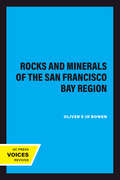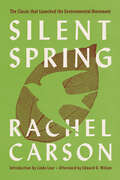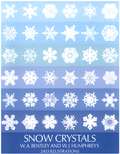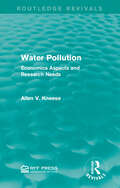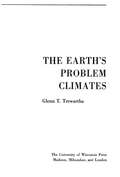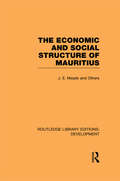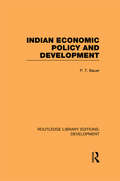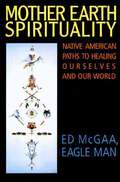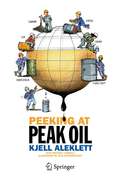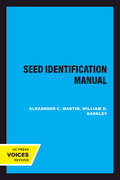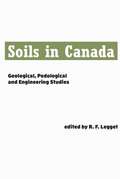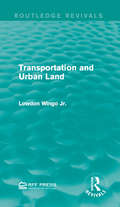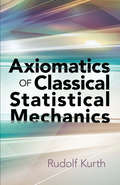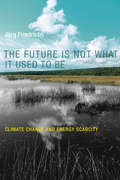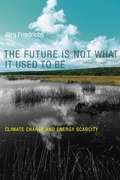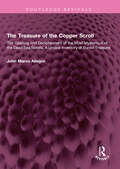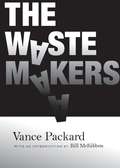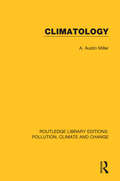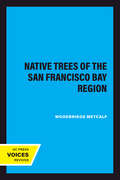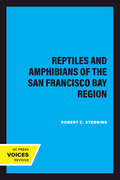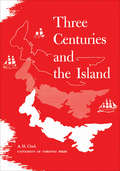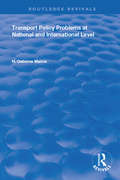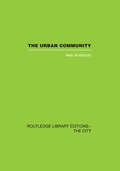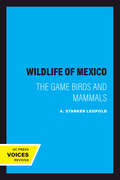- Table View
- List View
Rocks and Minerals of the San Francisco Bay Region (California Natural History Guides #5)
by Oliver E BowenThis title is part of UC Press's Voices Revived program, which commemorates University of California Press’s mission to seek out and cultivate the brightest minds and give them voice, reach, and impact. Drawing on a backlist dating to 1893, Voices Revived makes high-quality, peer-reviewed scholarship accessible once again using print-on-demand technology. This title was originally published in 1962.This title is part of UC Press's Voices Revived program, which commemorates University of California Press’s mission to seek out and cultivate the brightest minds and give them voice, reach, and impact. Drawing on a backlist dating to 1893, Voices Revived</DIV
Silent Spring (Pelican Ser.)
by Rachel Carson Edward O. Wilson Linda LearRachel Carson's Silent Spring was first published in three serialized excerpts in the New Yorker in June of 1962. The book appeared in September of that year and the outcry that followed its publication forced the banning of DDT and spurred revolutionary changes in the laws affecting our air, land, and water. Carson's passionate concern for the future of our planet reverberated powerfully throughout the world, and her eloquent book was instrumental in launching the environmental movement. It is without question one of the landmark books of the twentieth century.
Snow
by Roy Mckie P. D. EastmanFrom the book: Snow! Snow! Come out in the snow. Snow! Snow! Just look at the snow! Come out! Come out! Come out in the snow. ... Picture descriptions add to the enjoyment of this book.
Snow Crystals
by W. A. Bentley W. J. HumphreysDid you ever try to photograph a snowflake? The procedure is very tricky. The work must be done rapidly in extreme cold, for even body heat can melt a rare specimen that has been painstakingly mounted. The lighting must be just right to reveal all the nuances of design without producing heat. But the results can be rewarding, as the work of W. A. Bentley proved. <p><p> For almost half a century, Bentley caught and photographed thousands of snowflakes in his workshop at Jericho, Vermont, and made available to scientists and art instructors samples of his remarkable work. In 1931, the American Meteorological Society gathered together the best of these photomicrographs, plus some slides of frost, glaze, dew on vegetation and spider webs, sleet, and soft hail, and a text by W. J. Humphreys, and had them published. That book is here reproduced, unaltered, and unabridged. Over 2,000 beautiful crystals on these pages reveal the wonder of nature's diversity in uniformity; no two are alike, yet all are based on a common hexagon. <p> The introductory text covers the technique of photographing snow crystals, classification, the fundamentals of crystallography, and markings. There are also brief discussions of the nature and cause of ice flowers, windowpane frost, dew, rime, sleet, and graupel. <p> The book is of great value both to students of ice forms and for textile and other designers who can use the natural designs of these snow crystals in their work. Every photograph is royalty-free; you may use up to 10 without fees, permission, or acknowledgement.
Water Pollution: Economics Aspects and Research Needs (Routledge Revivals)
by Allen V. KneesePublic agencies and industry will probably spend tens of billions of dollars on new water pollution abatement facilities in the next few decades. Added billions will be spent for the operation of new and existing facilities. How can physical science research reduce the cost of achieving objectives? And how can social science research make sure that the right objectives are being efficiently pursued? This title, first published in 1962, is directed to the orientation of the research effort, and the tool used for this purpose is an economic framework. This book will be of interest to students of economics and environmental studies.
The Earth's Problem Climates
by Glenn T. TrewarthaLatin America; Australia-New Zealand-Equatorial Pacific; Africa-Southern and Eastern Asia; Europe and the mediterranean Borderlands; Anglo-America.
The Economic and Social Structure of Mauritius (Routledge Library Editions: Development)
by James E MeadeFirst published in 1961, this reissue examines the contemporary economic problems of Mauritius alongside those social problems which have a bearing on economic development. As a small and isolated economy, marked by a very rapid rate of contemporary population growth, by an extreme concentration on a single product, and by a great diversity of racial, religious and linguistic groups within the population, Mauritius is a representative microcosm of the economic problems of a large part of the developing world. The book considers the impact of a lower birth rate, emigration and economic development upon the economy of Mauritius, examining in detail the labour market, the prospects for agricultural and industrial development, the financial system and the education system.
Indian Economic Policy and Development (Routledge Library Editions: Development)
by P. T. BauerProfessor Bauer’s book, first published in 1961, reviews the major elements of contemporary official Indian development policy, considers their economic implications and their probable political and economic results. He then examines alternative approaches to the promotion of development. The development plans, notably the Second Five Year Plan and the official outlines of the Third Plan, receive major attention, but the author also considers other official policies and measures affecting economic development, which do not usually figure prominently in the formal development plans. Specific themes which Professor Bauer considers are: the influence of social customs and attitudes on economic progress; the relationship between investment expenditure and economic development; inter-relationships between agriculture and industry; the heavy industry programme; the controls over the private section; the relation of Plan finance to the foreign exchange crisis; the role of foreign aid; and the importance of certain major political objectives.
Mother Earth Spirituality: Native American Paths to Healing Ourselves
by Ed McGaa"A dear stream of practical knowledge with the mind change we need to save the life of our Mother Earth--and ourselves . . . This is a book for every person who loves this planet. Eagle Man shows us the joyful path home to our universal Mother."?ynthia Bend, Water Spirit Woman, co-author of Birth of a Modem Shaman"A rich panorama of our native heritage which allows the seeker access to the heart of the Path of Beauty. Ed McGaa has walked this path so that all people may live in harmony."Samie Sams, Hancoka Olowanpi, author of Midnight Song: Quest for the Vanished Ones"Ed McGaa is one of the first persons who can write about 0glala religion in the first person because he has lived it. For years anthropologists have hoped a Native American would portray that society from the inside out. Ed McGaa has. It's about time."William K. Powers, author of 0glala Religion"Fascinating as well as inspiring reading. Ed McGaa makes an excellent spiritual guide and intellectual teacher . . . The information stimulates the mind, the drawings delight the eye, and the ideas soothe the spirit."Jack Weatherford, author of Indian Givers"Profound and insightful . . . Mother Earth Spirituality will be of great importance to those of us, both 'rainbow' and non-Indian people, who walk over land in search of a deeper spiritual life . . . For us, this book is an invaluable guide showing us how to do it."Fred Alm Wolf, Ph.D., author of Taking the Quantum Leap
Peeking at Peak Oil
by Michael Lardelli Olle Qvennerstedt Kjell AleklettThe term "Peak Oil" was born in January 2001 when Colin Campbell formed the Association for the Study of Peak Oil & Gas (ASPO). Now, Peak Oil is used thousands of times a day by journalists, politicians, industry leaders, economists, scientists and countless others around the globe. Peak Oil is not the end of oil but it tells us the end is in sight. Anyone interested in food production, economic growth, climate change or global security needs to understand this new reality. In Peeking at Peak Oil Professor Kjell Aleklett, President of ASPO International and head of the world's leading research group on Peak Oil, describes the decade-long journey of Peak Oil from extremist fringe theory to today's accepted fact: Global oil production is entering terminal decline. He explains everything you need to know about Peak Oil and its world-changing consequences from an insider's perspective. In simple steps, Kjell tells us how oil is formed, discovered and produced. He uses science to reveal the errors and deceit of national and international oil authorities, companies and governments too terrified to admit the truth. He describes his personal involvement in the intrigues of the past decade. What happens when a handful of giant oil fields containing two thirds of our planet's oil become depleted? Will major oil consumers such as the EU and US face rationing within a decade? Will oil producing nations conserve their own oil when they realize that no one can export oil to them in the future? Does Peak Oil mean Peak Economic Growth? If you want to know the real story about energy today and what the future has in store, then you need to be "Peeking at Peak Oil".
Seed Identification Manual
by Alexander C. Martin William D. BarkleyThis title is part of UC Press's Voices Revived program, which commemorates University of California Press’s mission to seek out and cultivate the brightest minds and give them voice, reach, and impact. Drawing on a backlist dating to 1893, Voices Revived makes high-quality, peer-reviewed scholarship accessible once again using print-on-demand technology. This title was originally published in 1961.This title is part of UC Press's Voices Revived program, which commemorates University of California Press’s mission to seek out and cultivate the brightest minds and give them voice, reach, and impact. Drawing on a backlist dating to 1893, Voices Revived</DIV
Soils in Canada: Geological, Pedological and Engineering Studies (The Royal Society of Canada Special Publications #3)
by Robert LeggetThis work originated in a Symposium forming part of the programme for Section IV (Geological Sciences including Mineralogy) of the Royal Society of Canada, which met at Queen's University, Kingston, in 1960. Of wide scope, it demonstrates the progress now being made in Canada in the study of its vast area of soils. The papers of this Symposium are unique in that they present for the first time a combined picture of three aspects of soil science–the geological, the pedological (or agricultural), and the engineering (known as Soil Mechanics). The book serves, of course, mainly as an introduction to a large subject, but some more detailed papers give an idea of the depth as well as the wide range of soil studies in Canada today. The contents can be summarized as follows. First come seven papers on Pleistocene geology in Canada, followed by a study of muskeg (which forms half a million square miles of Canada's surface) and one of soil mineralogy. Four papers–one general and three regional–of pedological interest follow. Finally come four papers on soil mechanics: one relating agricultural and engineering soil studies; one discussing geology's influence on the siting and building of airports; a detailed account of the properties of Leda clay; and a general review of the soil problems facing the Canadian civil engineer.
Transportation and Urban Land (Routledge Revivals)
by Lowdon Wingo Jr.Urban land is a precious resource and originally published in 1961, Transportation and Urban Land aims to create an approach to analysing and projecting its uses with a particular focus on the household sector. By considering matters such as employment centres, organisation and technology of transportation and marginal valuation of residential space, Wingo develops a model to estimate how much land is required for residential land uses. This title will be of interest to students of Environmental Studies and professionals.
Axiomatics of Classical Statistical Mechanics (Dover Books on Physics #Volume 11)
by Rudolf KurthRequiring only familiarity with elements of calculus and analytical geometry, this monograph constructs classical statistical mechanics as a deductive system, based on equations of motion and basic postulates of probability. 1960 edition.
The Future Is Not What It Used to Be: Climate Change and Energy Scarcity
by Jorg FriedrichsA hard look at the twin challenges of climate change and energy scarcity that examines historical precedents and allows no room for complacency.The future is not what it used to be because we can no longer rely on the comforting assumption that it will resemble the past. Past abundance of fuel, for example, does not imply unending abundance. Infinite growth on a finite planet is not possible. In this book, Jörg Friedrichs argues that industrial society itself is transitory, and he examines the prospects for our civilization's coming to terms with its two most imminent choke points: climate change and energy scarcity. He offers a thorough and accessible account of these two challenges as well as the linkages between them.Friedrichs contends that industrial civilization cannot outlast our ability to burn fossil fuels and that the demise of industrial society would entail cataclysmic change, including population decreases. To understand the social and political implications, he examines historical cases of climate stress and energy scarcity: devastating droughts in the ancient Near East; the Little Ice Age in the medieval Far North; the Japanese struggle to prevent “fuel starvation” from 1918 to 1945; the “totalitarian retrenchment” of the North Korean governing class after the end of Soviet oil deliveries; and Cuba's socioeconomic adaptation to fuel scarcity in the 1990s. He draws important lessons about the likely effects of climate and energy disruptions on different kinds of societies.The warnings of climate scientists are met by denial and inaction, while energy experts offer little guidance on the effects of future scarcity. Friedrichs suggests that to confront our predicament we must affirm our core values and take action to transform our way of life. Whether we are private citizens or public officials, complacency is not an option: climate change and energy scarcity are emerging facts of life.
The Future Is Not What It Used to Be
by Jörg FriedrichsThe future is not what it used to be because we can no longer rely on the comfortingassumption that it will resemble the past. Past abundance of fuel, for example, does not implyunending abundance. Infinite growth on a finite planet is not possible. In thisbook, Jrg Friedrichs argues that industrial society itself is transitory, and he examines theprospects for our civilization's coming to terms with its two most imminent choke points: climatechange and energy scarcity. He offers a thorough and accessible account of these two challenges aswell as the linkages between them. Friedrichs contends that industrialcivilization cannot outlast our ability to burn fossil fuels and that the demise of industrialsociety would entail cataclysmic change, including population decreases. To understand the socialand political implications, he examines historical cases of climate stress and energy scarcity:devastating droughts in the ancient Near East; the Little Ice Age in the medieval Far North; theJapanese struggle to prevent "fuel starvation" from 1918 to 1945; the "totalitarianretrenchment" of the North Korean governing class after the end of Soviet oil deliveries; andCuba's socioeconomic adaptation to fuel scarcity in the 1990s. He draws important lessons about thelikely effects of climate and energy disruptions on different kinds ofsocieties. The warnings of climate scientists are met by denial and inaction,while energy experts offer little guidance on the effects of future scarcity. Friedrichs suggeststhat to confront our predicament we must affirm our core values and take action to transform our wayof life. Whether we are private citizens or public officials, complacency is not an option: climatechange and energy scarcity are emerging facts of life.
The Treasure of the Copper Scroll: The Opening and Decipherment of the Most Mysterious of the Dead Sea Scrolls, A Unique Inventory of Buried Treasure (Routledge Revivals)
by John Marco AllegroFirst published in 1960, The Treasure of the Copper Scroll is the companion volume to John Marco Allegro’s People of the Dead Sea Scrolls and tells the story of this unusual, buried treasure. Allegro here reveals much hitherto unknown information – the location of many of the cities of the Old Testament, events of the second Jewish Revolt, and the relation between the Essene community at Qumran and the New Testament interest in healing. With facsimiles of the scroll, translations of its texts, and a thorough discussion of its significance, with maps indicating many of the probable present-day hiding places, the book is a truly fascinating report on this unusual document and a first long step toward the unravelling of its secrets.
The Waste Makers
by Bill Mckibben Vance PackardAn exposé of "the systematic attempt of business to make us wasteful, debt-ridden, permanently discontented individuals," The Waste Makers is Vance Packard's pioneering 1960 work on how the rapid growth of disposable consumer goods was degrading the environmental, financial, and spiritual character of American society. The Waste Makers was the first book to probe the increasing commercialization of American life--the development of consumption for consumption's sake. Packard outlines the ways manufacturers and advertisers persuade consumers to buy things they don't need and didn't know they wanted, including the two-of-a-kind of everything syndrome--"two refrigerators in every home"--and appeals to purchase something because it is more expensive, or because it is painted in a new color. The book also brought attention to the concept of planned obsolescence, in which a "death date" is built into products so that they wear out quickly and need to be replaced. By manipulating the public into mindless consumerism, Packard believed that business was making us "more wasteful, imprudent, and carefree in our consuming habits," which was using up our natural resources at an alarming rate. A prescient book that predicted the rise of American consumer culture, this all new edition of The Waste Makers features an introduction by best-selling author Bill McKibben. Vance Packard (1914-1996) was an American journalist, social critic, and best-selling author. Among his other books were The Hidden Persuaders, about how advertisers use psychological methods to get people to buy the products they sell; The Status Seekers, which describes American social stratification and behavior; and The Naked Society, about the threats to privacy posed by new technologies.
Climatology
by A. Austin MillerOriginally published in 1931 (this re-issues the 8th edition of 1953), this book gives students a comprehensive account of global climatic types and the impact of climate on economics, issues of race, health, meteorology and geography. Climate change is covered from earliest times up until the middle of the twentieth century. The material is supplemented with 82 black and white maps/diagrams.
Native Trees of the San Francisco Bay Region
by Woodbridge MetcalfThis title is part of UC Press's Voices Revived program, which commemorates University of California Press’s mission to seek out and cultivate the brightest minds and give them voice, reach, and impact. Drawing on a backlist dating to 1893, Voices Revived makes high-quality, peer-reviewed scholarship accessible once again using print-on-demand technology. This title was originally published in 1959.This title is part of UC Press's Voices Revived program, which commemorates University of California Press’s mission to seek out and cultivate the brightest minds and give them voice, reach, and impact. Drawing on a backlist dating to 1893, Voices Revived</DIV
Reptiles and Amphibians of the San Francisco Bay Region (California Natural History Guides #3)
by Robert C. StebbinsThis title is part of UC Press's Voices Revived program, which commemorates University of California Press’s mission to seek out and cultivate the brightest minds and give them voice, reach, and impact. Drawing on a backlist dating to 1893, Voices Revived makes high-quality, peer-reviewed scholarship accessible once again using print-on-demand technology. This title was originally published in 1959.This title is part of UC Press's Voices Revived program, which commemorates University of California Press’s mission to seek out and cultivate the brightest minds and give them voice, reach, and impact. Drawing on a backlist dating to 1893, Voices Revived</DIV
Three Centuries and the Island
by Andrew Hill ClarkThis study is one of the first in the field of historical geography to be published in Canada. Written after exhaustive research, it uses a particular approach to the study of historical agricultural geography which concentrates on the use of basic distributional evidence for the description and interpretation of the changing character of any region through any period of time. By the analysis of over 1200 maps, some of which form part of the text of the book, Professor Clark studies agriculture as the dominant economic activity of Prince Edward Island and traces with remarkable clarity through the changing patterns of land culture throughout the province.The book begins with a description of the natural geography of the Island which, despite its small size, shows surprising variety. It goes on to prove the necessity for careful consideration of the background of habit and prejudice of groups of different origin when studying the changing geographies of land use.The settlement of the Island is traced from the time it was used as a summer campground by the Micmac Indians. Details of the arrival of the first Acadians, the transfer to British rule, and the subsequent influx of Scottish, Irish, Loyalist, and English stock are given together with evidence of the effect their coming had on the agriculture of the region. One hundred and fifty-five maps and sixteen tables to illustrate the distribution of population by area and origin, changes in kind and distribution of crops, census of livestock, etc., from the early eighteenth century to the present day, and from the days when the potato was unknown as a crop through the fur-farming era.The author presents this study as part of his life-work, a programme of research on the settlement overseas in the seventeenth, eighteenth, and nineteenth centuries of the people from the British Isles. He is descended from Prince Edward Island settlers and writes of the province from a background of personal knowledge of, and affection for, the land of his forbears.
Transport Policy Problems at National and International Level: A Contribution by the Transport Workers' Unions (Routledge Revivals)
by International Transport Worker's FederationPublished in 1959, this book presents a study of transport problems including those of the coordination of inland transport, and special problems of coordination in areas of urban transport, civil aviation, sea ports and arising problems in the course of the economic integration of Europe.
Wildlife of Mexico: The Game Birds and Mammals
by A. Starker LeopoldThis title is part of UC Press's Voices Revived program, which commemorates University of California Press’s mission to seek out and cultivate the brightest minds and give them voice, reach, and impact. Drawing on a backlist dating to 1893, Voices Revived makes high-quality, peer-reviewed scholarship accessible once again using print-on-demand technology. This title was originally published in 1959.
